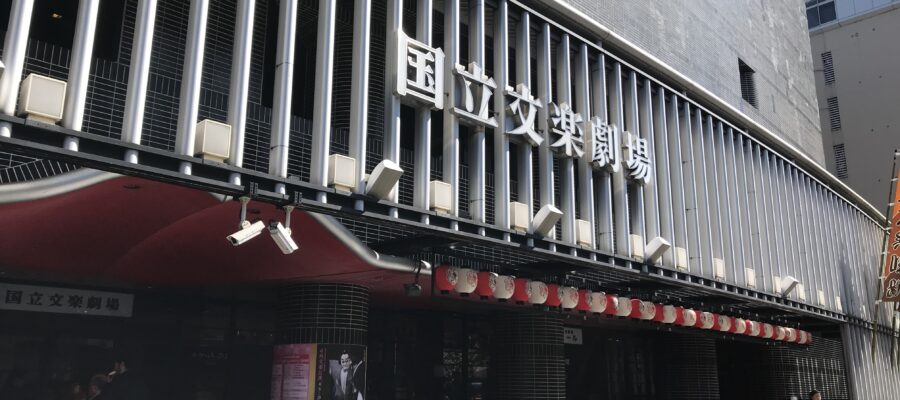はじめての文楽
大阪に住んでいて、文楽を見たことないというのは、ごく普通のことです。かくいう私も、50歳を超えるまで一度も見たことがありませんでした。日本の歴史文化について伝える仕事をする以上、一度は鑑賞しておきたいと思っていたところ、たまたま所属している異業種交流会の企画で、仮名手本忠臣蔵を見る機会を得ました。
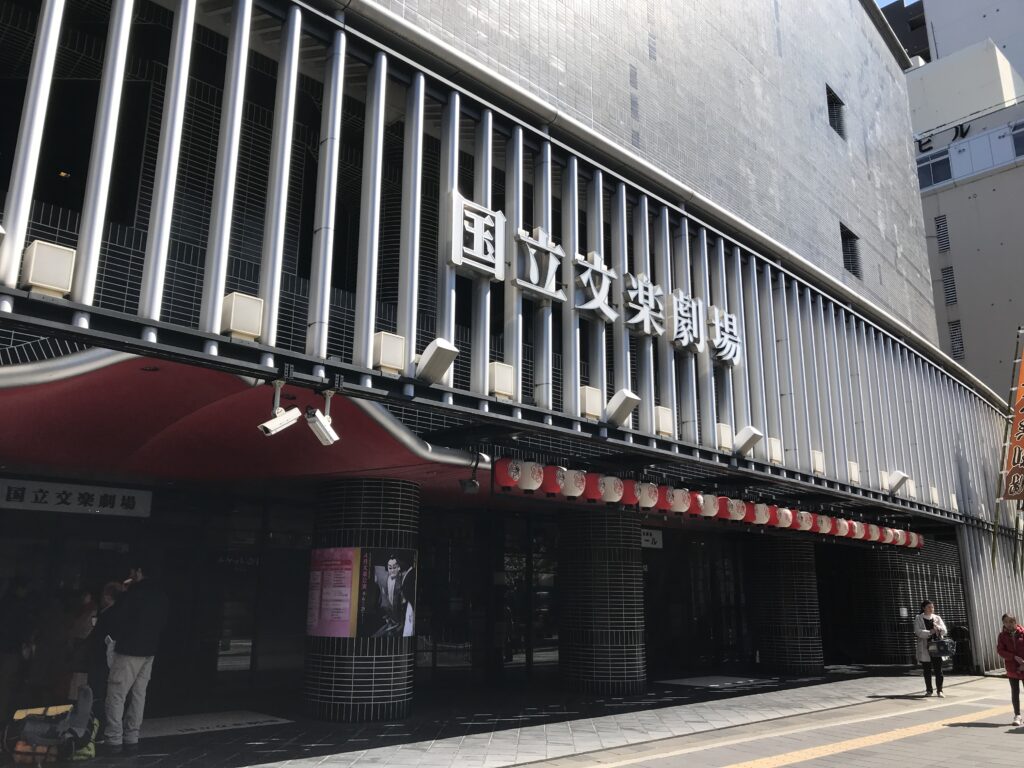
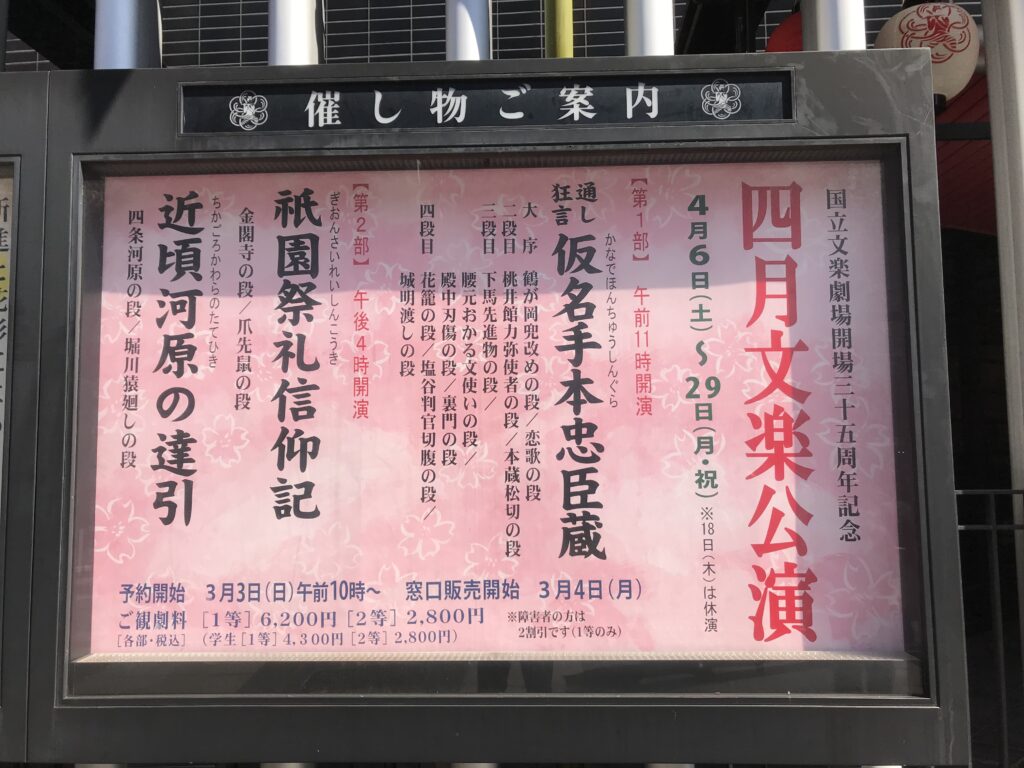
資料室で文楽の基本を知る
少し早く到着したので、1階の資料館で展示を見てみました。1体の人形を3人で操作するというのも独特ですし、人形遣いの1人は自分の顔を隠さずに操作するということに、なぜ?と疑問が湧きました。
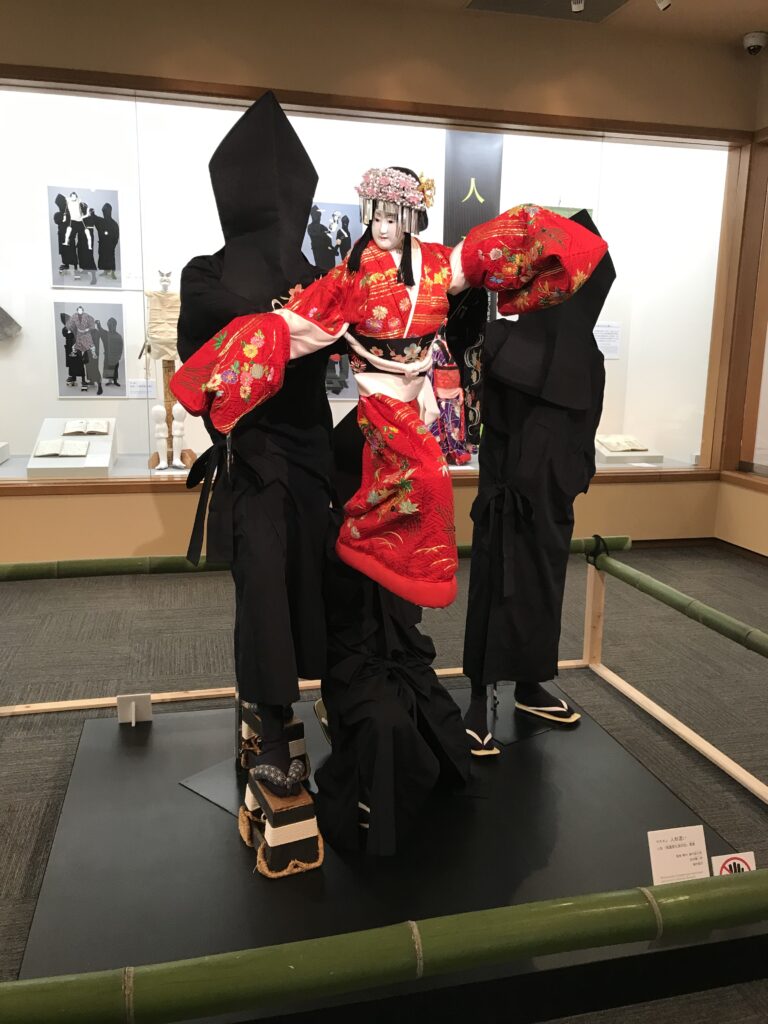
人形の骨組みを紹介している展示では、男性の人形は足がついていますが、女性の人形には足がなく、着物の裾の下には何もありません。もしかしたら、幽霊に足がないというイメージが、この文楽の人形に影響しているのかもと、頭に浮かんできました。
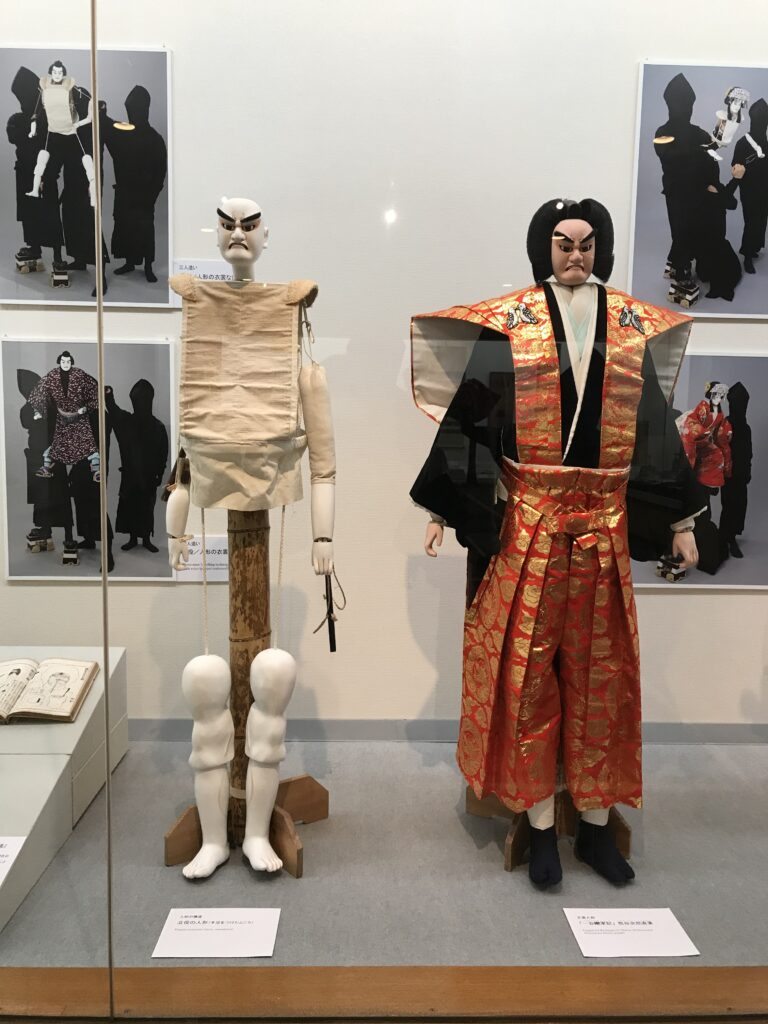
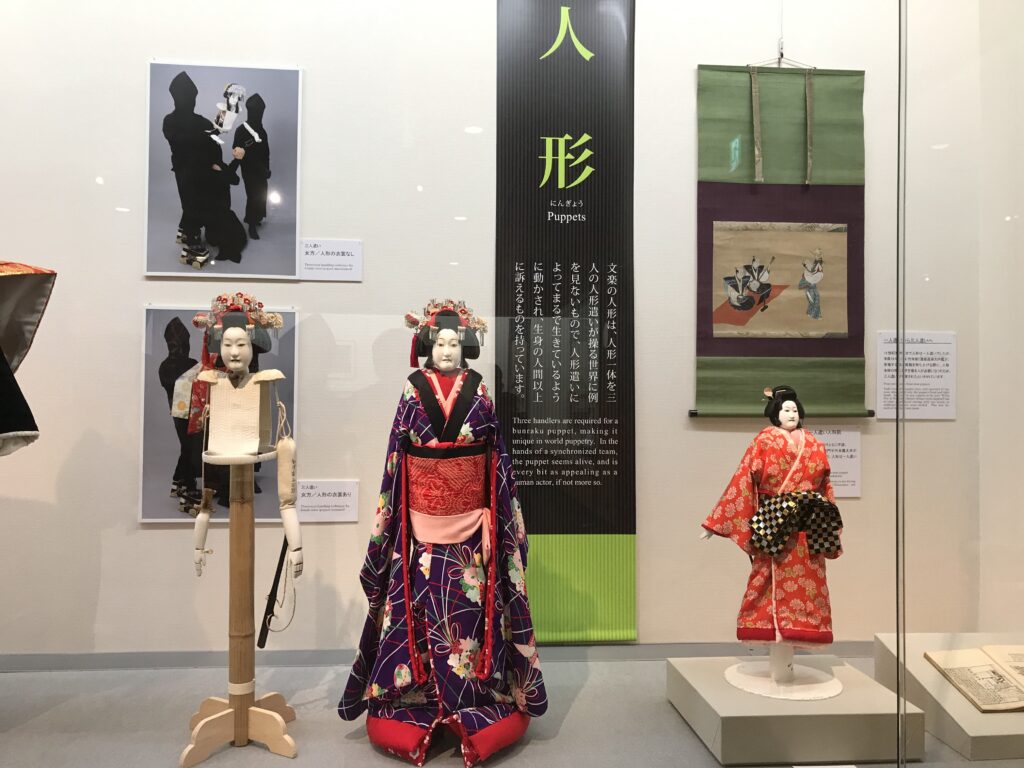
伴奏の三味線も展示されています。昔、子供の頃に祖母の家で三味線を触った記憶がありますが、こうやってまじまじと見たのは、大人になってから初めてです。また、大夫が読まれる台詞の帳面も展示してあります。かなり大きな文字を、一字一字書かれているのですが、何を書いているのか、さっぱり読めませんでした。
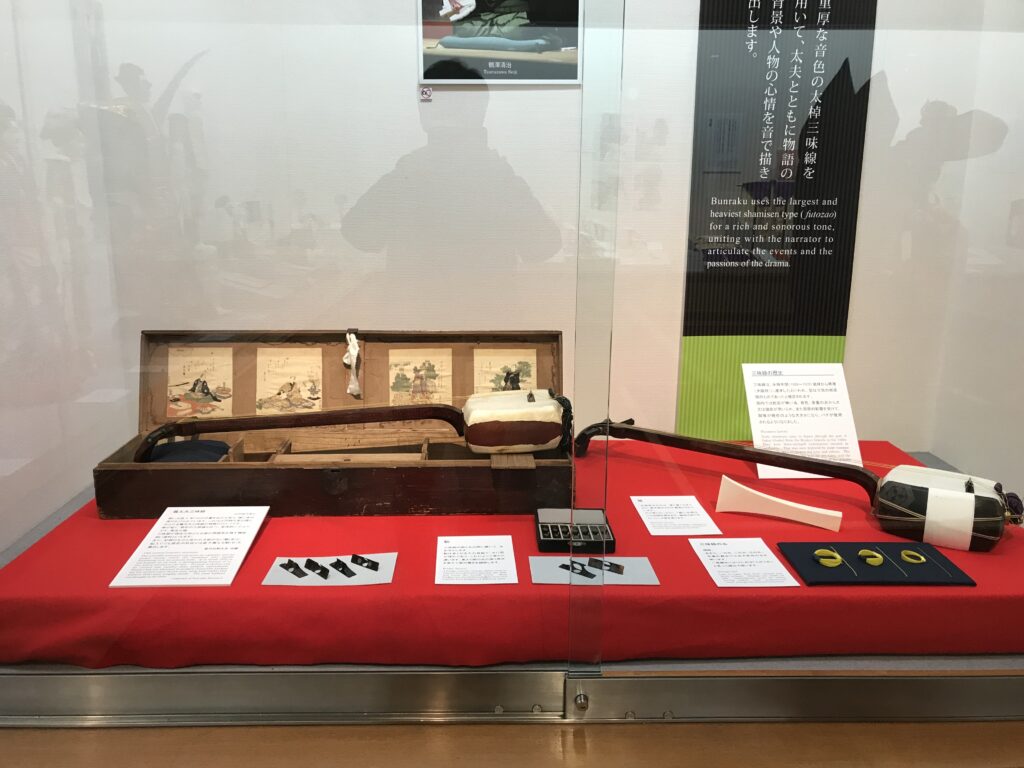
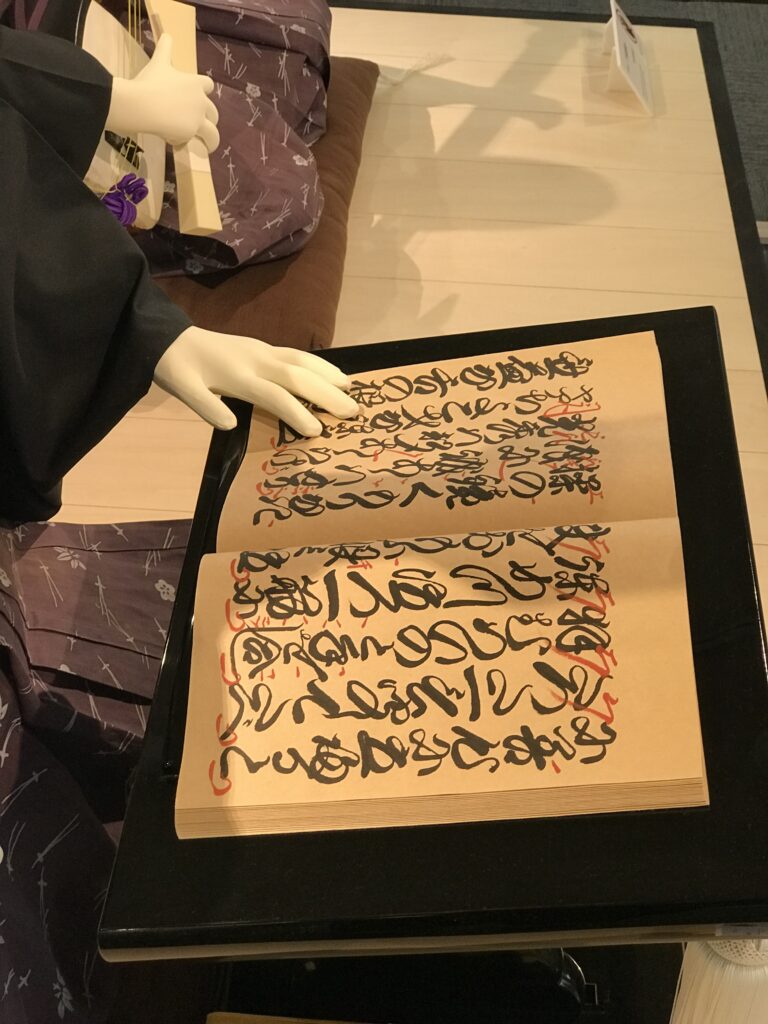
伝統を受け継ぐ若い人に感銘
若いころから修行して、一人前にできるようになるのは50歳を超えてからというような話を伺い、芸を究めることの奥深さに、自分には難しいと正直に思いました。それでも、若い方々が、今も文楽の世界に入ってきており、伝統芸能を絶やさないという心意気に感銘を受けました。(完)
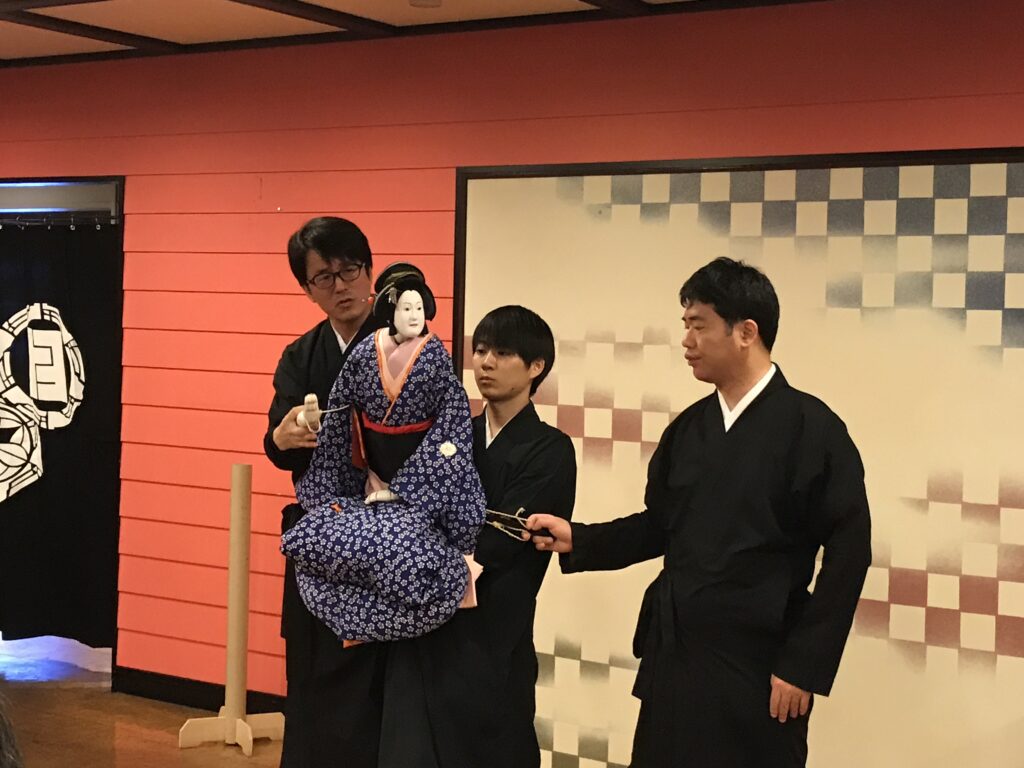
文楽を紹介している書籍
私自身の入門用として購入しました。鑑賞前のあらすじ理解は必要です。
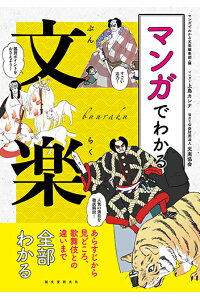
マンガでわかる文楽 あらすじから見どころ、歌舞伎との違いまで全部わかる [ マンガでわかる文楽編集部 ]
価格:1,760円
(2021/7/15 18:33時点)
感想(0件)
National Bunraku Theatre (English)
My First Bunraku (Puppet Show)
It is quite normal for people living in Osaka to have never seen Bunraku. I, too, had never seen a Bunraku performance until I was over 50 years old. As I am in the business of telling people about Japanese history and culture, I wanted to see it at least once, and I happened to have the opportunity to see the play “Kanadehon Chushingura” as part of a cross-industrial exchange program that I belonged to.
Learn about the basics of Bunraku in the reference room
Since I arrived a little early, I went to the museum on the first floor to check out the exhibits, which were unique in that three people were operating one puppet, and one of the puppeteers was operating it without hiding his own face. I wondered why.
In the exhibit showing the skeletons of the dolls, the male dolls have legs, but the female dolls do not, and there is nothing under the hem of the kimono. It came to my mind that perhaps the image of ghosts having no legs might have influenced these Bunraku dolls.
There is also a shamisen (Japanese 3 string musical instruments) on display to accompany the music. I remember touching the shamisen at my grandmother’s house when I was a child, but this is the first time I’ve seen it in person since I became an adult. Also on display was the script for the dialogue read by the tayu (story teller). I couldn’t read what was being written on them, though they were written in very large letters.
Impressed by the young people who carry on the tradition
I was told that you have to train from a young age and only become a full-fledged professional when you are over 50 years old. I honestly thought that it would be difficult for me to master the art. Nevertheless, young people are still entering the world of Bunraku, and I was impressed by their spirit of keeping the traditional art alive. (End)
Théâtre national Bunraku (Français)
Mon premier Bunraku (spectacle de marionnettes)
Il est tout à fait normal que les habitants d’Osaka n’aient jamais vu de Bunraku. Moi aussi, je n’avais jamais vu de spectacle de Bunraku jusqu’à ce que j’aie plus de 50 ans. Comme mon métier consiste à parler aux gens de l’histoire et de la culture japonaises, j’ai voulu en voir au moins une fois, et j’ai eu l’occasion de voir la pièce “Kanadehon Chushingura” dans le cadre d’un programme d’échange interindustriel auquel je participais.
Découvrez les bases du Bunraku dans la salle de référence.
Comme je suis arrivé un peu tôt, je suis allé au musée du premier étage pour voir les expositions, qui étaient uniques en ce sens que trois personnes faisaient fonctionner une marionnette, et l’un des marionnettistes la faisait fonctionner sans cacher son propre visage. Je me suis demandé pourquoi.
Dans l’exposition montrant les squelettes des poupées, les poupées masculines ont des jambes, mais pas les poupées féminines, et il n’y a rien sous l’ourlet du kimono. Il m’est venu à l’esprit que l’image des fantômes sans jambes avait peut-être influencé ces poupées Bunraku.
Un shamisen (instrument de musique japonais à trois cordes) est également exposé pour accompagner la musique. Je me souviens avoir touché le shamisen chez ma grand-mère quand j’étais enfant, mais c’est la première fois que je le vois en personne depuis que je suis adulte. Le script du dialogue lu par le tayu (conteur) était également exposé. Je n’ai pas pu lire ce qui était écrit dessus, même si c’était écrit en très grosses lettres.
Impressionné par les jeunes qui perpétuent la tradition.
On m’a dit qu’il fallait s’entraîner dès le plus jeune âge et ne devenir un professionnel à part entière qu’à partir de 50 ans. Je pensais sincèrement qu’il me serait difficile de maîtriser cet art. Néanmoins, les jeunes continuent à entrer dans le monde du Bunraku, et j’ai été impressionné par leur volonté de maintenir l’art traditionnel en vie. (Fin)
